Premium
Solar Panels from
LA Solar Group
Our high-performance LA Solar panels are engineered for efficiency, built for durability, and designed to look great on your roof.
Whether you’re upgrading your energy system or going solar for the first time, our panels are tailored for California homes and businesses.
Explore Our
LA Solar and other Panels
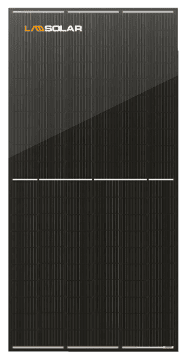
TOP
LA Solar 430–450W
Black Series
- High efficiency solar panels in sleek, black-on-black design
- Monocrystalline module, 430 or 450w power output
- Ideal for residential & commercial scale applications
- Always in stock!
- Best value for homeowners
- 30-year warranty

TOP
LA Solar 545–550W
Commercial Series
- High efficiency solar panels in sleek, black-on-black design
- Monocrystalline module, 545 or 550w power output
- Ideal for residential & commercial scale applications
- Always in stock!
- Best value for homeowners
- 30-year warranty

TOP
Triangle Black Solar
Modules
- Mismatch loss reduction for maximum efficiency
- Two EL test to ensure the best quality
- Competitive low light performance
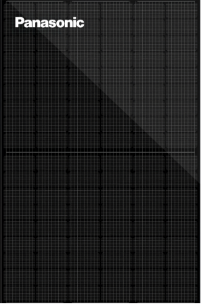
TOP
PANASONIC N-370
- High efficiency solar panels in sleek, black-on-black design
- Monocrystalline module, 360 or 370w power output
- Ideal for residential & commercial scale applications
- Always in stock!
- Best value for homeowners
- 30-year warranty
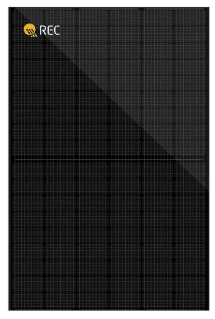
TOP
Rec 400–430W
- Higher Module Efficiency
- EVERVOLT AllGuard, AllGuard and TripleGuard 25-Year Warranty
- High Efficiency in High Temperatures
- Heterojunction Cell Technology with Gapless Connections
- Durability & Quality Assurance
- Improved Performance When Shaded
Key Features to Consider
When Choosing Solar Panels

Efficiency
Higher efficiency panels generate more electricity from the same amount of sunlight, meaning you need fewer panels to meet your energy needs.

Wattage
Panels with higher wattage ratings produce more power per panel, which is ideal for maximizing energy production in limited roof space.

Panel Type
Monocrystalline panels, especially with half-cut cell technology, offer superior performance, durability, and better resistance to shading

Temperature Coefficient
A lower temperature coefficient means the panel loses less efficiency on hot days, ensuring better real-world energy output.

Aesthetics
Sleek designs like all-black panels provide a cleaner, more attractive look that blends seamlessly into different roof styles.

Warranty
Look for comprehensive warranties that cover product quality, performance guarantees, and sometimes even labor and roof protection for added peace of mind.
Compare LA Solar Panels
to Industry Leaders
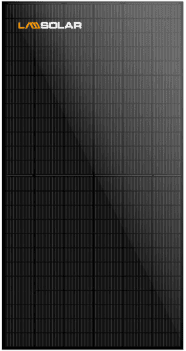


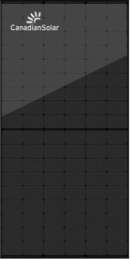

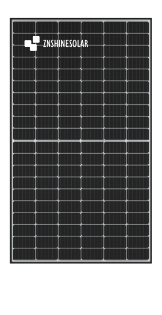

Features
LA Solar LS450BL
Panasonic 430 W
REC 430W
Canadian Solar HiKu 455W
Qcells Q.TRON
BLK M-G2+ 440W
Znshine ZXMR-
UHLD108 505W
VSUN 400
Wattage (W)
450
450
430
455
455
505
405
Max Efficiency (%)
20.6
22.2
22.2
20.6
22.5
22.56
20.75
Number of Cells
144
120
80
144
108
108
108
Dimensions
2108 x 1048 x 35 mm
(83 x 41.3 x 1.38 in)
1865 x 1040 x 30 mm
(73.4 x 40.9 x 1.2 in)
1730 x 1118 x 30 mm
(68.11 x 44.02 x 1.2 in)
2108 x 1048 x 40 mm
(83 x 41.3 x 1.57 in)
1722 x 1134 x 30 mm
(67.8 in x 44.6 in x 1.2 in)
1974 x 1134 x 30 mm
(77.72 x 44.6 x 1.2 inch
1723 x 1133 x 35mm
(67.83 x 44.61 x 1.38 in)
Weight
24 kg (52.91 Ibs)
21.6 kg (47.6 lbs)
21.5 (47.4 lbs)
24.9 kg (54.9 lbs)
21.2 kg (46.7 lbs)
27 kg (59.5 lbs)
21.8 kg (48.1 lbs)
Degradation (1st Yr / Annual)
97.5% / 0.50%
98% / 0.25%
98% / 0.25%
97.5% / 0.55%
98.5% / 0.33%
99% / 0.40%
98% / 0.45%
PTS Rating / Fire Rating
Type 1
UL61730 Type 2
UL61730 Type 2
Type 1 / Class C
C / Type 2
IEC61215/61730
Fire Class C
Warranty (Product / Performance)
30 years
25 / 25 years
25 / 25 years
12 / 25 years
25 / 25 years
12 / 30 years
12 / 30 years
Temp. Coefficient (%/°C)
-0.35
-0.24
-0.24
-0.35
-0.3
-0.28
-0.32%/°C
Max System Voltage (V)
1500
1000
1000
1500
1000
1500
1000
Connector Type
MC4
MC4
MC4
T4 / H4 / MC4-EVO2
MC4
MC4-EVO2
PV-ZH202B
(compatible with MC4 type)
Manufacturing Origin
USA / Armenia
Japan
Singapore
Canada
Korea / Germany
China
Korea / Germany

LA Solar LS450BL
Wattage (W)
450
Max Efficiency (%)
20.6
Number of Cells
144
Dimensions
2108 x 1048 x 35 mm
(83 x 41.3 x 1.38 in)
Weight
24 kg (52.91 Ibs)
Degradation (1st Yr / Annual)
97.5% / 0.50%
PTS Rating / Fire Rating
Type 1
Warranty (Product / Performance)
30 years
Temp. Coefficient (%/°C)
-0.35
Max System Voltage (V)
1500
Connector Type
MC4
Manufacturing Origin
USA / Armenia
Data sheet
Panasonic 430 W
Wattage (W)
450
Max Efficiency (%)
22.2
Number of Cells
120
Dimensions
1865 x 1040 x 30 mm
(73.4 x 40.9 x 1.2 in)
Weight
21.6 kg (47.6 lbs)
Degradation (1st Yr / Annual)
98% / 0.25%
PTS Rating / Fire Rating
UL61730 Type 2
Warranty (Product / Performance)
25 / 25 years
Temp. Coefficient (%/°C)
-0.24
Max System Voltage (V)
1000
Connector Type
MC4
Manufacturing Origin
Japan
Data sheet
REC 430W
Wattage (W)
430
Max Efficiency (%)
22.2
Number of Cells
80
Dimensions
1730 x 1118 x 30 mm
(68.11 x 44.02 x 1.2 in)
Weight
21.5 (47.4 lbs)
Degradation (1st Yr / Annual)
98% / 0.25%
PTS Rating / Fire Rating
UL61730 Type 2
Warranty (Product / Performance)
25 / 25 years
Temp. Coefficient (%/°C)
-0.24
Max System Voltage (V)
1000
Connector Type
MC4
Manufacturing Origin
Singapore
Data sheet
Canadian Solar HiKu 455W
Wattage (W)
455
Max Efficiency (%)
20.6
Number of Cells
144
Dimensions
2108 x 1048 x 40 mm
(83 x 41.3 x 1.57 in)
Weight
24.9 kg (54.9 lbs)
Degradation (1st Yr / Annual)
97.5% / 0.55%
PTS Rating / Fire Rating
Type 1 / Class C
Warranty (Product / Performance)
12 / 25 years
Temp. Coefficient (%/°C)
-.035
Max System Voltage (V)
1500
Connector Type
T4 / H4 / MC4-EVO2
Manufacturing Origin
Canada
Data sheet
Qcells Q.TRON BLK M-G2+ 440W
Wattage (W)
455
Max Efficiency (%)
22.5
Number of Cells
108
Dimensions
1722 x 1134 x 30 mm
(67.8 in x 44.6 in x 1.2 in)
Weight
21.2 kg (46.7 lbs)
Degradation (1st Yr / Annual)
98.5% / 0.33%
PTS Rating / Fire Rating
C / Type 2
Warranty (Product / Performance)
25 / 25 years
Temp. Coefficient (%/°C)
-0.3
Max System Voltage (V)
1000
Connector Type
MC4
Manufacturing Origin
Korea / Germany
Data sheet
Znshine ZXMR- UHLD108 505W
Wattage (W)
505
Max Efficiency (%)
22.56
Number of Cells
108
Dimensions
1974 x 1134 x 30 mm
(77.72 x 44.6 x 1.2 inch
Weight
27 kg (59.5 lbs)
Degradation (1st Yr / Annual)
99% / 0.40%
PTS Rating / Fire Rating
IEC61215/61730
Warranty (Product / Performance)
12 / 30 years
Temp. Coefficient (%/°C)
-0.28
Max System Voltage (V)
1500
Connector Type
MC4-EVO2
Manufacturing Origin
China
Data sheet
VSUN 400
Wattage (W)
405
Max Efficiency (%)
20.75
Number of Cells
108
Dimensions
1723 x 1133 x 35mm
(67.83 x 44.61 x 1.38 in)
Weight
21.8 kg (48.1 lbs)
Degradation (1st Yr / Annual)
98% / 0.45%
PTS Rating / Fire Rating
Fire Class C
Warranty (Product / Performance)
12 / 30 years
Temp. Coefficient (%/°C)
-0.32
Max System Voltage (V)
1000
Connector Type
PV-ZH202B (compatible with MC4 type)
Manufacturing Origin
Korea / Germany
Data sheet
Why LA Solar Panels?
Vertically integrated
We design, manufacture, and install our solar panels—giving you better quality control, better pricing, and a smoother process from start to finish.
Affordable ownership
We guide you through unlocking local rebates, and answer your questions about the 30% Federal Tax Credit helping you reduce upfront costs and maximize long-term savings.
Local expertise
Our team knows California-specific incentives, roof types, and permitting processes—ensuring a faster and more efficient install.
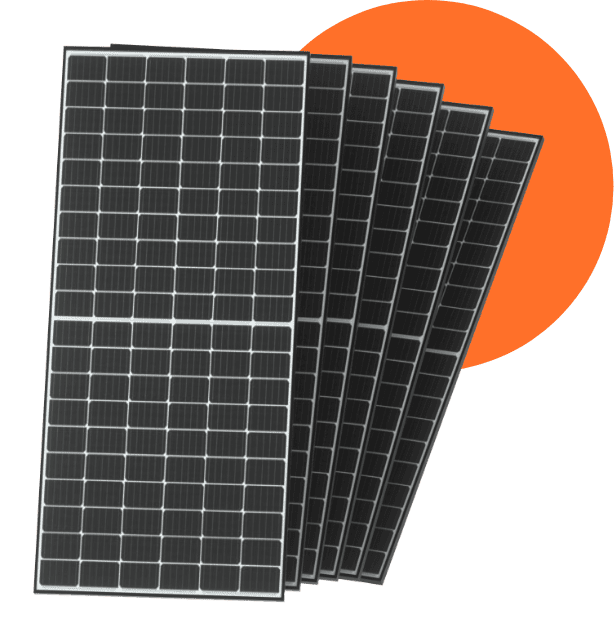
Real Customer Results
Don’t just take our word for it—our customers are seeing real savings and energy independence with our panels
Very pleased with the service and the results. Took a number of calls for me to understand what was needed, what I wanted. Crew put the panels up in one day. That was 2 years ago. Works as promised.
Anna F.
Sonoma, Ca
The setup was quick and simple. My advisor assisted me in determining the appropriate system size for my home. Thank you to senior management and entire crew for being so competent and compassionate.
Karen A.
San Fernando, Ca
Could not be happier with their response to the issues we were having with the gateway to our batteries. Always responsive and friendly, very knowledgeable service people and the problem was fixed ASAP.
Benjamin F.
Fullerton, Ca
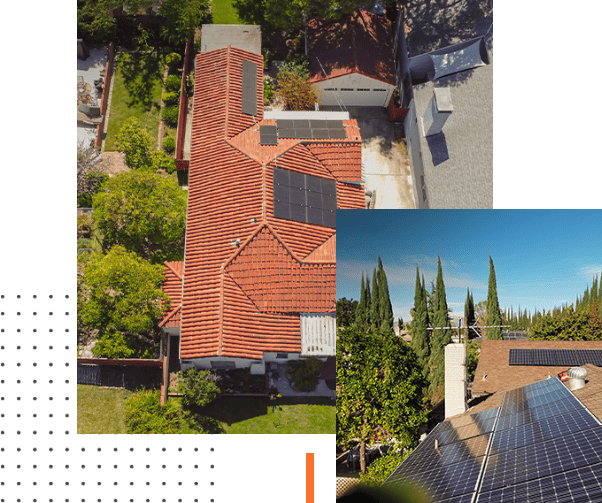
Solar Install Gallery
Explore our real-world installations and see the
difference LA Solar panels make in curb appeal and performance.
- Black-on-black residential installs
- Commercial rooftop arrays
- Before & after energy bill snapshots
- Ground-mount & custom layouts
How Many Solar Panels Do I Need?
Choosing the right number of solar panels starts with a bit of simple math—and a clear understanding of your energy needs. Here’s how to estimate what your home or business may require:

Determine Your Energy Usage
Look at your electric bill to find your total annual usage in kilowatt-hours (kWh). This is the foundation for calculating your solar needs.
Example: A typical California household uses around 10,000 kWh per year
Determine Your Area’s Production Ratio
This ratio represents how much energy 1 kW of solar panels will produce in your area, based on sun exposure.
- Sunny regions like California = 1.6
- Cloudier regions = closer to 1.3
Factor in Your Panel Wattage
LA Solar Group panels range from 430W to 550W. Higher-wattage panels generate more energy per panel and may reduce the total number you need.
Formula: Number of Panels = Annual Usage (kWh) ÷ Production Ratio ÷ Panel Wattage
Example: A homeowner in Los Angeles wants to offset 10,000 kWh/year using 450W panels and has great sun exposure: 10,000 ÷ 1.6 ÷ 450 = ~14 panels
Adjust Based on Future Plans
- Adding an EV or pool? Size up your system.
- Limited roof space? Consider higher-wattage panels for fewer total units
Why
LA Solar Panels?
Use our 1-Click Solar Calculator to find out exactly what your home or business needs.
Just enter
- Your average electric bill
- Your utility company
And we’ll estimate
- System size (kW)
- The production

Get a Free Solar Quote Today
We provide a personalized quote with
Custom solar system design
Cost breakdown + savings analysis
Location-specific rebates and tax credit guidance
Go solar with confidence—power your future with LA Solar Group.

